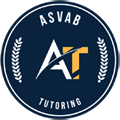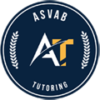A Complete Study Guide to acing ASVAB
Enrolling in the US Army can get effort and time-consuming. Be it navy, marine corps, or even coast guard, the exam fairly judges the candidates based upon their performance. Therefore, the candidate must focus on themselves and improvise on problem areas.
Are you preparing for ASVAB? Don’t worry, we got your back! Following a systemized-structured routine and ASVAB study guide will not only help in smart learning but also criticizes the areas you should spend time learning. You need to start preparing now to ace all the nine individual subtests ranging from assembling objects to mathematics knowledge.
Arithmetic Reasoning & Mathematics Knowledge
| Number Types | Percent | Average | Geometric skills and concepts | Area and perimeter | Others |
| Integers | Percent less than 100 | Average speed | Properties of parallel lines | Rectangles | Multiplication and addition of odd and even numbers |
| Odd number | Percent greater than 100 | Weighted Average | Angle relationships | Circles | Probability |
| Even number | Percent less than one | Side relationships | Triangles | Factoring | |
| Prime number | Percent increase/decrease | Properties of signed numbers | |||
| Digits | Coordinate geometry & geometric figures | ||||
| Volume |
Paragraph Comprehension
The best ASVAB study guide would primarily focus upon paragraph subtest dealing with a variety of topics such as :
- Flying over the passage
- Openings and endings
- Creating a tentative summary
- Using kitchen logic
- Getting into the author’s mind
- Emotional words
- Using context clues
- Finding the keywords
- Different viewpoints
- Finding your optimal pace
- Breaking down passage organization
- Making proper inferences
- Factually correct, but wrong
- Understanding the intimidation
- Applying ideas for generalizations
- Extraneous information
- First-word analysis
- Don’t be a perfectionist
Word Knowledge
To train your vocabulary skill and knowledge, focus specifically upon:
- Prefixes
- Suffixes
- Synonyms
- Strong words
- Word nature
- Word type
- Substitution
- Using sentences
- Related choices
- Familiar words
- Work fast
- All choices
Mechanical Comprehension
| Fundamentals of mechanics | Machines | Applications |
| Principles, friction, and other forces, energy, work, power | Simple machines, complex machines, gears | General like modulus of elasticity, ceramics, specific gravity, force lines of action, and loads |
Auto and Shop Information
This section primarily focuses upon the basic knowledge of vehicles, their tools, and practices used in automotive shops. When studying for this section, pay attention to the functioning of the vehicles and the different types of equipment. They are broadly classified into :
- Engines
- Operating systems
- Automotive shop tools and procedures
Assembling Objects
This top test is modified to identify your skill in dimensional ability and comprehend relationships among objects. Broadly stated, there are two major types :
- Connection items: These questions are asked to form lines and shape intellectually
- Puzzle items: These consist of multiple shapes for you to create new and finished shapes cognitively, more like mental maths but advanced.
Electronics Information
Apart from preparing for electronic symbols and signifiers with electoral terminology, everyday application of electronic concepts, and Ohm’s Laws describing the relationship between voltage amperage and resistance, its applications, and uses, educate on the following :
| Electron Flow Theory | Circuits | Electrical Units of Measurement | Household Electrical Systems | Electricity and magnetism |
| Atoms, protons, neutrons, and electrons, valence shell | Closed and open circuits | Ohms | Alternating current, direct current and their difference | Magnetic field |
| Conductor, semiconductor, insulator | Load | Amperes | Grounding, resistors, diodes, transistors | Motor and generator basics |
| Current, voltage, resistance | Series circuit, parallel circuit | Volts | Fuse, circuit breaker, short circuit | Inductor |
| Electrical power | Watts | Semiconductors, doping | Transformer |
General Science
The general signs subtest focuses on a variety of scientific areas including astronomy, anatomy, ecology, biology, and geology. Broadly speaking, it can be broadly categorized into:
- Life Science
- Earth and Space Science
- Physical Science
- Chemistry
Conclusion
A few of the trusted ASVAB study book(s) in the market instruct the candidate to analyze in-depth and complicated questions. Persistent practice combined with smart studying can result in cracking the test. With a positive approach and an open mind, acing the test is as simple as possible.
ABOUT US
The days are gone when you need to prove yourself as a good student by memorizing whole subjects. Nowadays you canjust learn the tec
READ MORE >>



